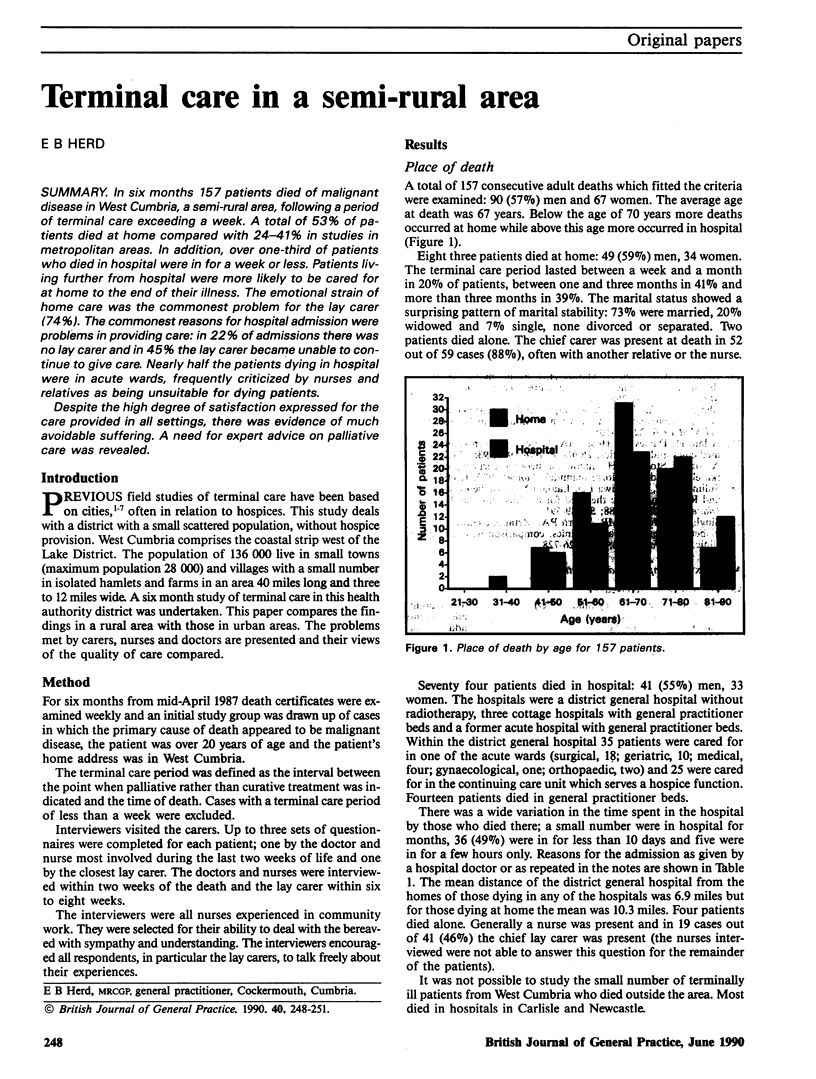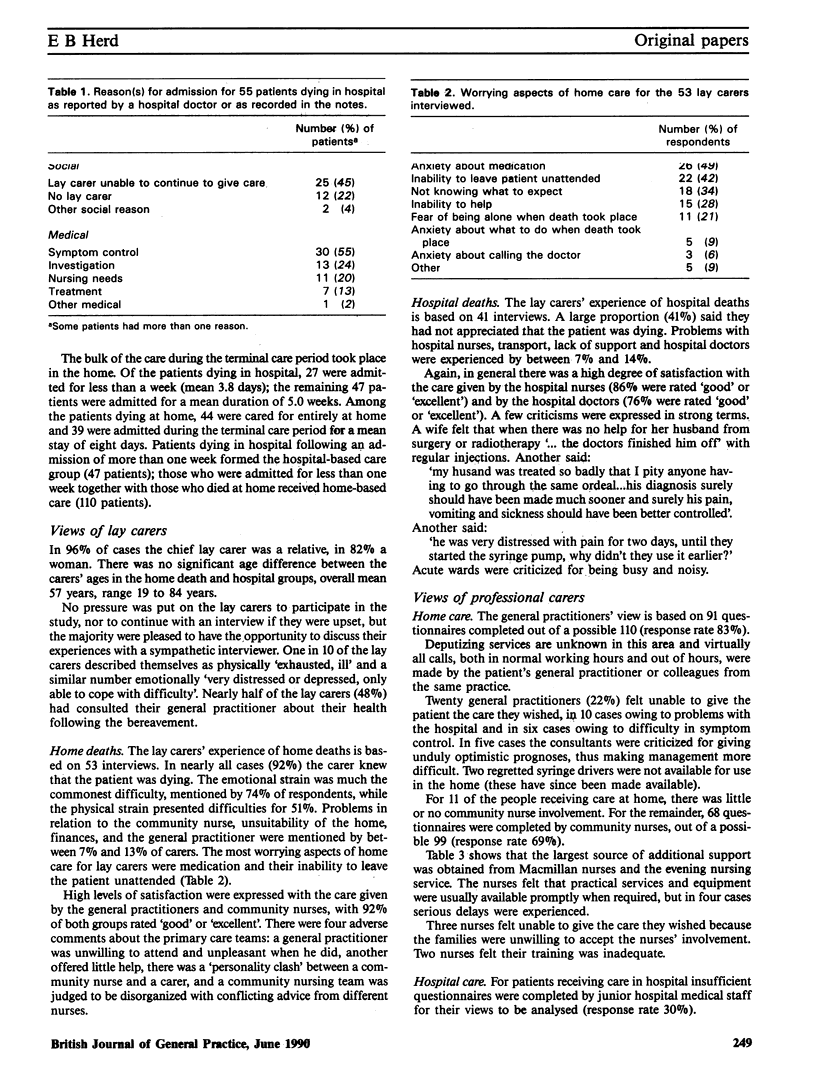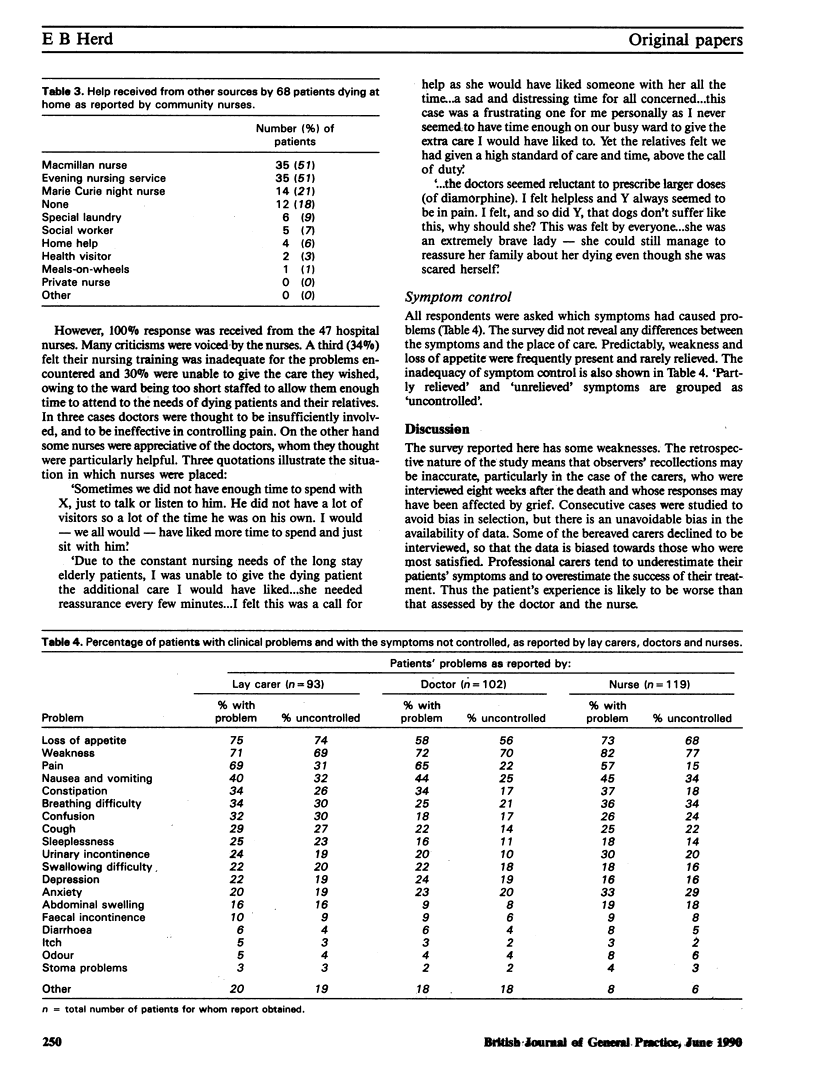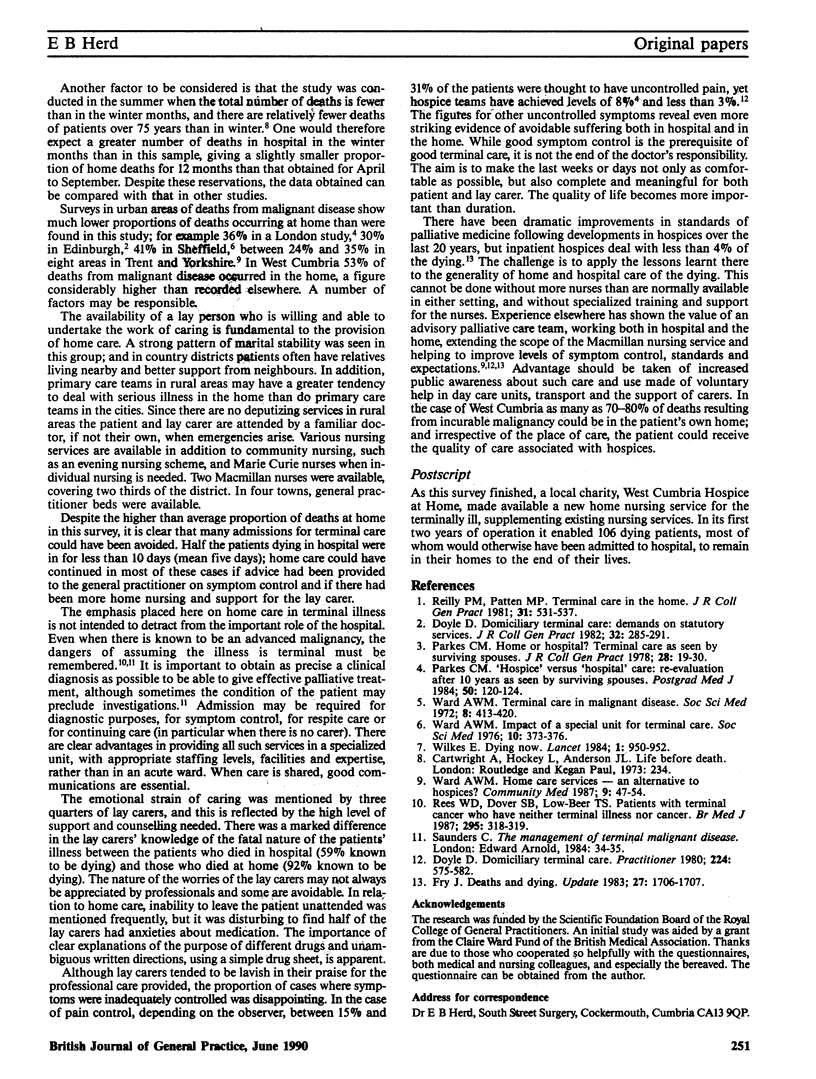Abstract
In six months 157 patients died of malignant disease in West Cumbria, a semi-rural area, following a period of terminal care exceeding a week. A total of 53% of patients died at home compared with 24-41% in studies in metropolitan areas. In addition, over one-third of patients who died in hospital were in for a week or less. Patients living further from hospital were more likely to be cared for at home to the end of their illness. The emotional strain of home care was the commonest problem for the lay carer (74%). The commonest reasons for hospital admission were problems in providing care: in 22% of admissions there was no lay carer and in 45% the lay carer became unable to continue to give care. Nearly half the patients dying in hospital were in acute wards, frequently criticized by nurses and relatives as being unsuitable for dying patients. Despite the high degree of satisfaction expressed for the care provided in all settings, there was evidence of much avoidable suffering. A need for expert advice on palliative care was revealed.
Full text
PDF



Selected References
These references are in PubMed. This may not be the complete list of references from this article.
- Doyle D. Domiciliary terminal care. Practitioner. 1980 Jun;224(1344):575–582. [PubMed] [Google Scholar]
- Doyle D. Domiciliary terminal care: demands on statutory services. J R Coll Gen Pract. 1982 May;32(238):285–291. [PMC free article] [PubMed] [Google Scholar]
- Parkes C. M. Home or hospital? Terminal care as seen by surviving spouses. J R Coll Gen Pract. 1978 Jan;28(186):19–30. [PMC free article] [PubMed] [Google Scholar]
- Parkes C. M., Parkes J. 'Hospice' versus 'hospital' care--re-evaluation after 10 years as seen by surviving spouses. Postgrad Med J. 1984 Feb;60(700):120–124. doi: 10.1136/pgmj.60.700.120. [DOI] [PMC free article] [PubMed] [Google Scholar]
- Rees W. D., Dover S. B., Low-Beer T. S. "Patients with terminal cancer" who have neither terminal illness nor cancer. Br Med J (Clin Res Ed) 1987 Aug 1;295(6593):318–319. doi: 10.1136/bmj.295.6593.318. [DOI] [PMC free article] [PubMed] [Google Scholar]
- Reilly P. M., Patten M. P. Terminal care in the home. J R Coll Gen Pract. 1981 Sep;31(230):531–537. [PMC free article] [PubMed] [Google Scholar]
- Ward A. W. Home care services--an alternative to hospices? Community Med. 1987 Feb;9(1):47–54. doi: 10.1093/oxfordjournals.pubmed.a043905. [DOI] [PubMed] [Google Scholar]
- Ward A. W. Terminal care in malignant disease. Soc Sci Med. 1974 Jul;8(7):413–420. doi: 10.1016/0037-7856(74)90127-9. [DOI] [PubMed] [Google Scholar]
- Ward A. W. The impact of a special unit for terminal care. Soc Sci Med. 1976 Jul-Aug;10(7-8):373–376. doi: 10.1016/0037-7856(76)90093-7. [DOI] [PubMed] [Google Scholar]
- Wilkes E. Dying now. Lancet. 1984 Apr 28;1(8383):950–952. doi: 10.1016/s0140-6736(84)92400-0. [DOI] [PubMed] [Google Scholar]


